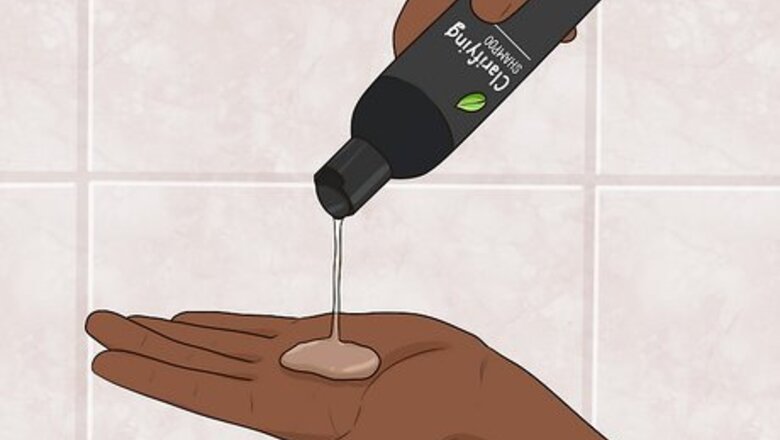
views
- If you have fine or straight hair, section your hair and then backcomb it while twisting to create dreads. Apply dread wax to hold each dread in place.
- If you have thick or curly hair, use a comb to twist each dread into a coil. Keep your hair moisturized with hair oil before you start.
- Maintain your dreads by hand rolling them once a day. Wash your dreads 2 to 4 times per week, and make sure they’re fully dry before going to sleep.
Backcombing

Wash your hair using a residue-free clarifying shampoo. Don't add conditioner or any other products to your hair after shampooing, and let your hair air dry or dry it with a hair dryer. Then, brush out your hair to get rid of snarls and tangles. Starting with dry hair ensures that the dreads will form properly and stay tight. Set aside 4 to 8 hours to dread your hair.
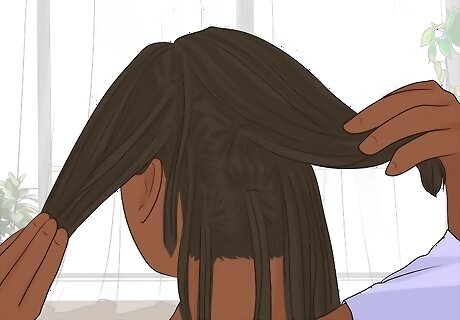
Use a fine tooth comb to part your hair into small sections. Each small section, or square, of hair will become a dreadlock. Do 1 in × 1 in (2.5 cm × 2.5 cm) squares for standard medium sized-locks or ⁄2 in (1.3 cm) squares for small locks. For a neater overall appearance, plan to make each dread the same size. The sections and rows in between the squares may be visible in the finished dreads. To avoid a patterned appearance, fashion the squares in a zig-zag or alternating format so that the finished look is more natural.

Backcomb the hair in sections. To start your dreads, hold a section of hair straight up from your scalp. Starting about 1 inch (2.5 cm) from your scalp, tease it down toward the scalp using your comb. Repeat several times until it begins to puff and pack up at the roots. Continue backcombing the same section of hair in 1 inch (2.5 cm) increments until you reach the bottom of the hair. As you backcomb with one hand, use the other hand to gently twist the section you're working on. This keeps it in shape and assists with the backcombing process. Use the same patience and care with each dread. If you rush through the last part of your hair, you'll end up with uneven-looking dreads.
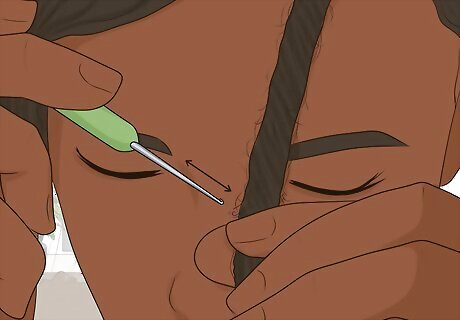
Strengthen the dread with a crochet hook. If you have straight or fine hair, you’ll probably notice that your dread is still soft and loose, even after backcombing. To fix that, crab a crochet hook and gently stab the hook into your dread, poking and pulling hair as you go. Work through the entire dread to fluff it out and strengthen it. If you have coarse or curly hair, you can skip this step.
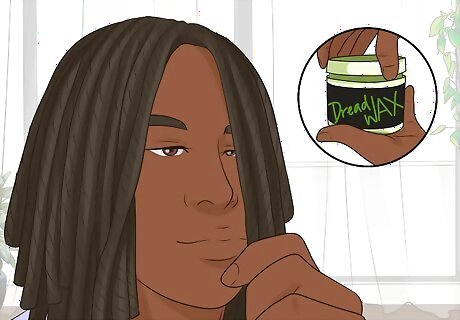
Apply dread wax to lock in the dreads. Use a natural dread wax, a beeswax molding paste, locking gel, or tightening gel to keep your dreads from fraying or frizzing. Apply the wax or gel to the entire length of the dread, taking care to cover the whole strand. If you choose to wax, only do it once every 2-4 weeks. Many people with dreads do not use a dread wax or gel because they believe it obstructs the dreading process. However, if you have very fine or straight hair, it’s likely that your dreads won’t stay in unless you use dread wax. If you prefer to use a lighter product, opt for a gel instead of wax.
Twisting
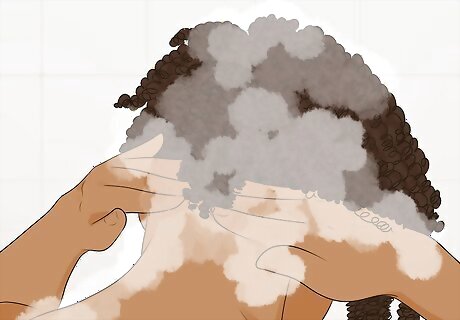
Wash and condition your hair. Hop into the shower and cleanse your hair with shampoo, then use conditioner to hydrate your hair. Let your hair air dry or dry it with a hair dryer before you start to help the dreads form well. It’s okay to use conditioner with the twisting method because you want your hair to be smooth and tangle-free. Plus, thick, curly hair needs a lot of moisture, even in dreadlocks. If your hair feels dry, do a deep conditioning treatment on it before you start. Twisting or coiling works best on thick, curly hair. Typically, this method won’t work with straight or wavy hair, because the texture won’t hold. The twisting method is also great for starting dreadlocks with short hair.
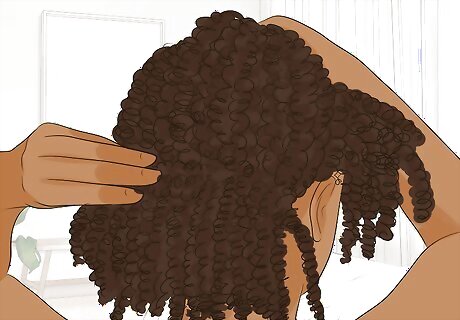
Apply hair oil to protect your hair. Hair oils like avocado oil and coconut oil protect and repair your hair while it’s in dreadlocks. Run a few drops of hair oil throughout your hair, focusing on the mid and end sections. Again, only use hair oil if you have thick, very curly hair. Using hair oil on fine or straight hair will only weigh it down and make dreadlocks harder to form.
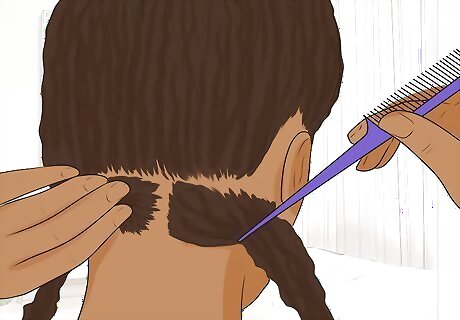
Section your hair into 1 by 1 in (2.5 by 2.5 cm) squares. Start near the base of your neck at the back of your head. Use a comb to section out 1 square of hair about 1 in (2.5 cm) wide and 1 in (2.5 cm) tall. Keep the same sectioning for each dreadlock so the finished product looks neat and even. If you need to, pin up the rest of your hair to keep it off your neck and out of the way.
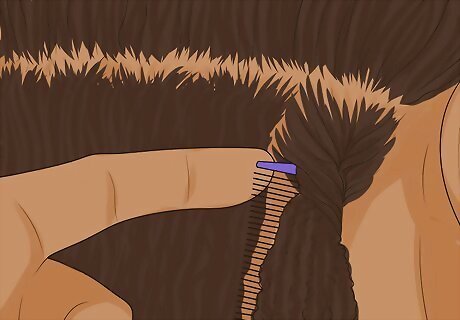
Twist 1 section into a coil with a fine tooth comb. Grab a comb and start at the roots. Slowly twist the section of hair with the comb, forming a small, tight coil. Keep twisting all the way down, using the comb to smooth out the hair. When you reach the end of the hair, remove the comb and let the hair hold its shape. As you twist, pull down slightly on the hair with your comb. That way, the tension will help pull your hair taut and keep the coil in place.
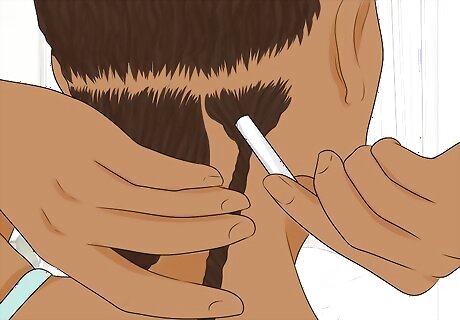
Hold the base of the coils in place with pins. You may notice that your coil starts to unfurl at the base. If that’s the case, use a curl clip to hold the dread steady. Place it near the base of the dread at your scalp to keep the dread tight. This step is optional, but definitely recommended. It helps keep the dreads tight as you work throughout the rest of your hair.

Keep adding coils all over your entire head. Here comes the fun part: doing it all over again! Work in 1 in (2.5 cm) sections, going in rows across your head. Don’t be afraid to take breaks if you need to, since your arms may get tired. Once you’re done, you can remove the clips from your hair. If your dreads start to untwist, apply dread wax to lock them in place.
Maintenance Tips

Roll the dreads between your palms once a day. To maintain your dreads, start at the scalp and work your way down. Make the ends look rounded by smashing them against the palm of your hand to encourage the hairs to roll up into the dread. Don't overdo the rolling, as the dreads will be more likely to unravel. Dreads usually fully lock after 3 to 6 months (but they could take longer depending on your hair type and thickness). Until then, it’s a good idea to roll them daily so they keep their shape.
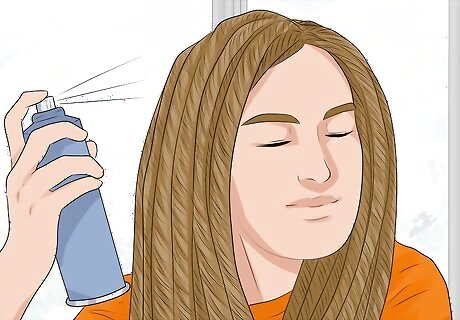
Moisturize the dreads daily to prevent breakage. Mix 3 parts aloe vera juice to 1 part natural oil (like coconut oil or sweet almond oil). Add up to 5 drops of an essential oil, like tea tree oil or lavender oil, if you want a scent. Put the mixture in a spray bottle. Lightly spritz your dreads every day. Try spraying your dreads in the morning to help hydrate them after sleeping. If you don’t want to make your own spray, use a spray-on conditioner instead.

Wash your hair with shampoo every 2 to 4 days. It is important to remove the buildup and cleanse the scalp as well as the deadlock themselves. To wash your hair, rinse your scalp and get it wet. Then, use shampoo on your scalp, but not on the dreads themselves. As you rinse your hair out, the water will run down the dreads and clean them without causing them to fray. Use a dread bar or a reside-free shampoo that doesn't contain perfumes and conditioners, which can cause the dreads to smell. Wash your hair in the morning so that your dreads have time to dry. If you go to bed with wet hair, mildew and mold can grow there.

Tuck in the loose hairs. As your hair grows and locks, some hair may become loose, especially close to your scalp. Use a crochet hook or tweezers to grab strands of loose hair and then tuck them back into the dreads. For longer loose strands, twist them and then wrap them around the dreads before tucking them in.

Rub the roots to help new hair growth dread. As your dreads mature, the individual hairs begin naturally knotting onto one another. After a while, your hair will grow into the dreads, but at first, it may become loose. Use your fingers to rub the new growth, section by section, to encourage it to knot up with the rest of the dreads. It's not necessary to rub the dreads too often. As your dreads mature, the new growth will naturally knot up about an inch from your scalp. Be careful not to overwork the hair at your roots, since you may cause it to fall out.

Comb your dreads out gently when you're ready to remove them. Contrary to popular belief, you actually don’t have to cut all your hair off to remove dreads! If you aren’t feeling the dreads anymore, saturate the ends with water and apply conditioner to them. Use a comb to slowly and gently pick the dreads apart one at a time. Removing dreads takes a long time, and you may experience some hair breakage. Take your time and go slowly, and don’t be afraid to give yourself a haircut afterwards.

















Comments
0 comment